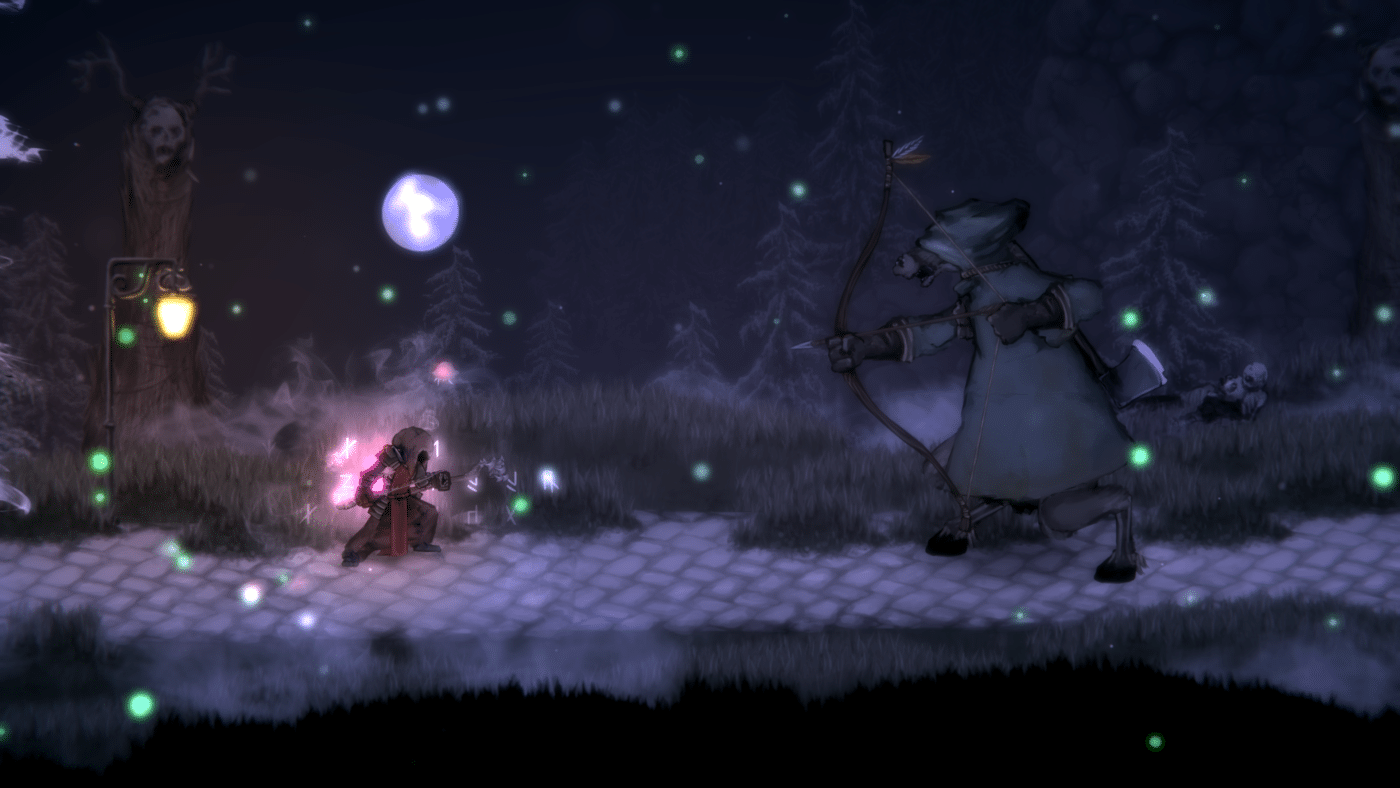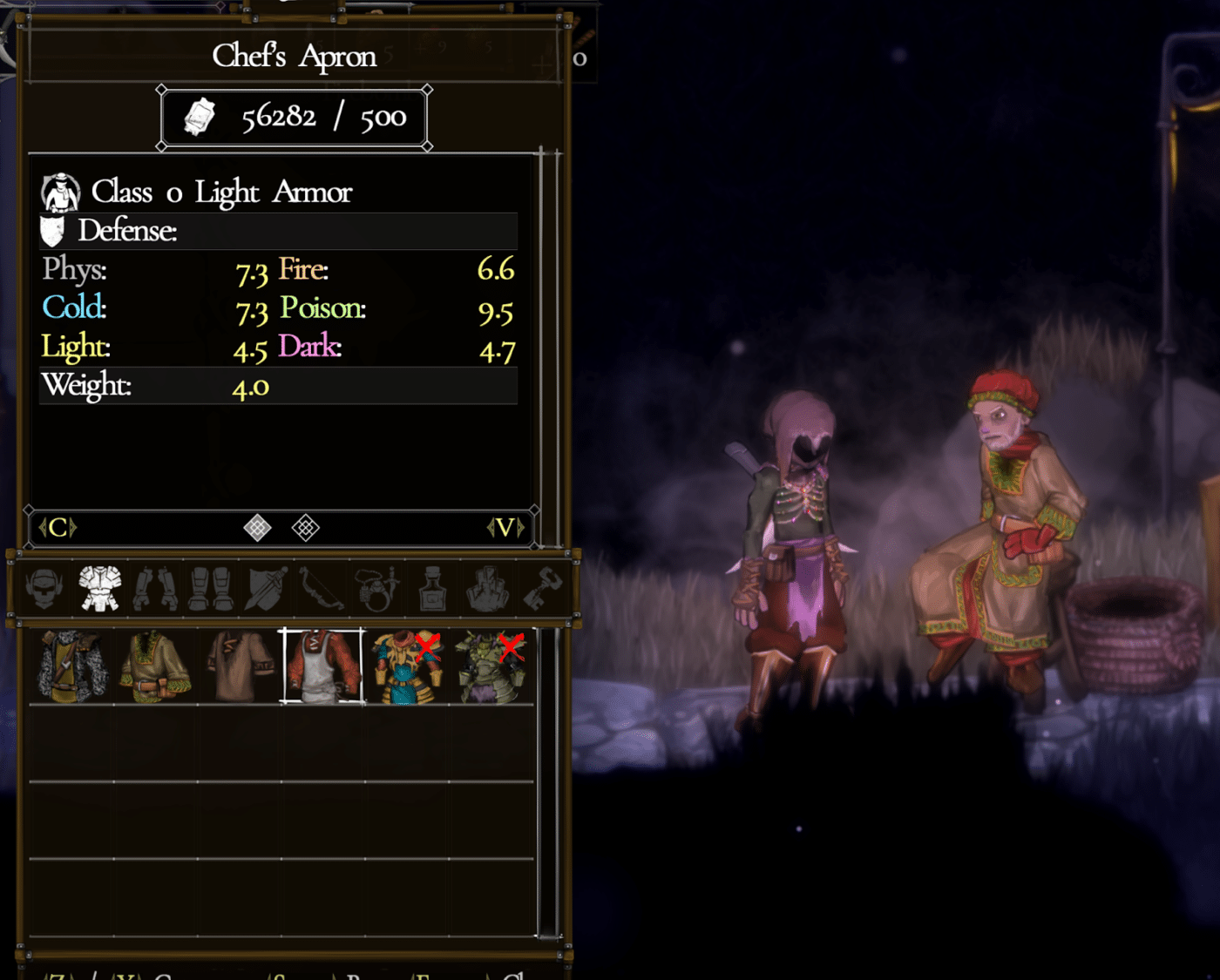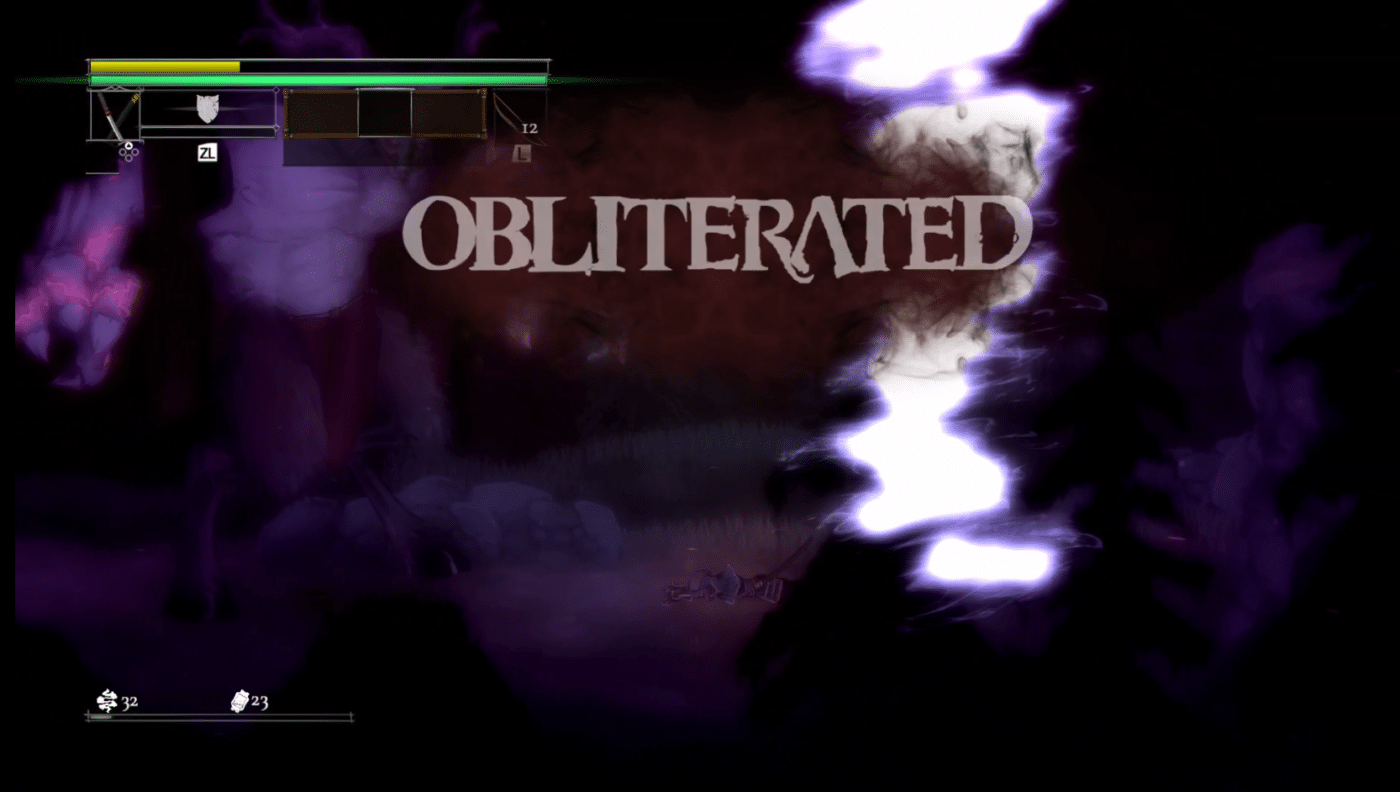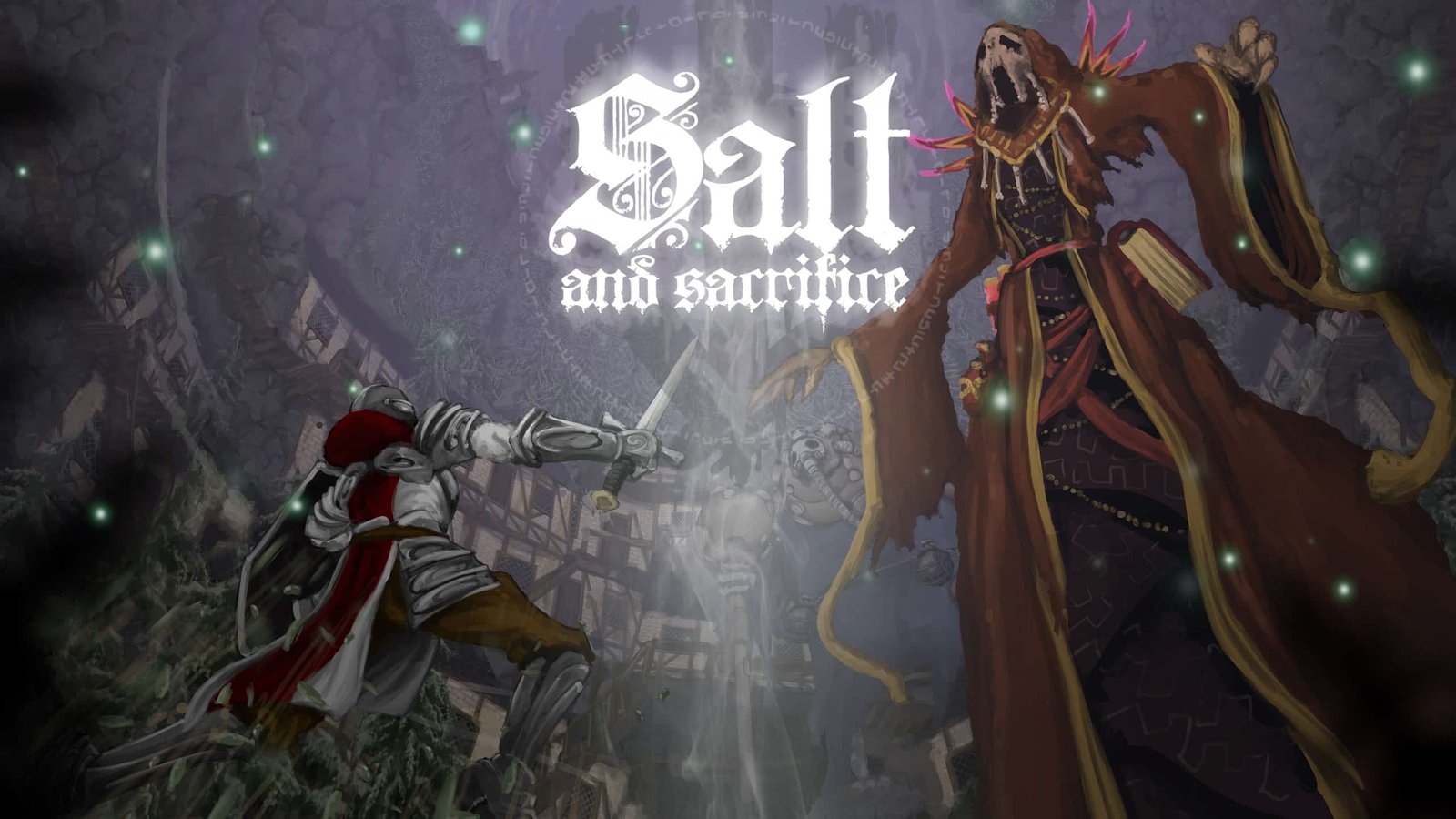| Key Takeaways |
|---|
| 1. Little instruction from the game can lead to a frustrating start, but becomes a rewarding experience once it clicks. |
| 2. Beautiful art style. |
| 3. Stick with it, and you'll be slaying Mages in no time! |
I usually try to avoid Souls-like platformers. I am not a patient gamer, and I really dislike having to repeat a section of a game. The punishing difficulty and sparse checkpoints that are common in this genre are weaknesses.
This is why I've stayed away from games like Hollow Knight or Blasphemous. I knew my frustration level would ruin the game for me.
I have been missing out!
Buzzword Salad

Salt and Sacrifice is a 2D Souls-like Metroidvania platformer. That's a lot of industry buzzwords in one sentence, but it describes the game perfectly. All of the mechanics you'd expect to find from those genres are here.
Like a typical Metroidvania, you must navigate through a maze of interconnected areas while unlocking new skills and devices that will allow you to open up previously sealed sections. The combat is very unforgiving, demanding precise timing and dodging like most Souls-likes. The world is also desolate and miserable like a lot of Souls-like games.
You are a Marked Inquisitor, and as retribution for your crimes, you must hunt down the vile Mages who are corrupting and destroying the land. Throughout the environment, you'll run into high-stakes combat encounters where you'll need to dodge incoming attacks until an opening presents itself for your counterattack.
Every enemy encounter can be your last if you're not careful. Even after hours of playing, I still get my butt handed to me by the first goblin I encounter because I rushed into battle carelessly. You also have a limited number of healing items, though they do restock when you rest at a save point.
Salt and Sacrifice is Hauntingly Beautiful

What gives this game its unique identity is the art style. Everything in the game is hand-drawn and animated by the developer, James Silva. The backgrounds are breathtaking, and the characters are all unique and look incredible. The world just feels ethereal.
One challenge I see in a lot of retro-inspired games is separating the playable character, enemies, and interactable items from the background. In some games, they tend to blend together visually, and it can become difficult to tell what's real and what's set-dressing. Salt and Sacrifice nails that balance. Walkable paths blend into the beautifully detailed environment, but it's still easy to tell what ledges can and cannot be jumped on.
It Does Not Teach You How to Play

The world of Salt and Sacrifice had far more depth than I anticipated. The world-building is exceptional. Each conversation with a character reveals something new. There's a history to this world. It simultaneously feels lived in and devoid of life.
The character builder was also surprisingly robust for a 2D platformer. You can choose your character's background, race, class, and even the crime of which you were convicted. The game has a ton of information to be found, but you have to find it. One vital piece of info the player must find is how to play the game.
Every game has a way that it wants to be played. Marvel's Spider-Man wants you to stay airborne and land perfect dodge attacks; Ghosts of Tsushima wants you to perfectly parry an attack and strike during an opening; and Bethesda games always want you to be a stealth archer. It's possible to play these games the way you want to play them, but they all have a way they want to be played, and usually they'll tell you.
Salt and Sacrifice doesn't do that. The game leaves it to you to explore the world, learn the fighting mechanics out in the field, and figure out how to level up and grow stronger. None of this information is explicitly communicated to the player. For example, after about 4 hours of playing, I decided to explore the hub world a little more since I unlocked a traversal item. I ran into a statue that I had never seen before. The statue let me level up and apply skill points, which I had been wondering how to do the entire time. That statue was always there and always accessible. I just never explored enough to find it.
I'm not sure if this approach is frustrating or challenging and rewarding. Maybe it's all three. I also don't know if it's intentional. Is it assumed that you've played the previous game first? Are these mechanics spelled out more clearly there? I'd definitely be interested to hear from anyone who's played both to know what their experience was like.
3 Lessons From Sticking With It

The first few hours of gameplay were a frustrating experience. I was dying during basic enemy encounters. I didn't feel like I was making any progress. The only way I could defeat the first boss was to cheese it, and that didn't feel like I was playing the game the way it was meant to be played.
So after banging my head against the wall for a couple of hours, I finally looked up a couple of playthroughs of the game to see what I was doing wrong. Turns out I was doing a lot wrong. Here are the most important lessons I learned:
- Perfect parries are a thing, and they're very important
- Ranged attacks are just as important
- Always be rolling
And then, suddenly everything clicked. I was nailing the dodge/block timing with enemies. I was spamming long-range attacks. I was able to explore the world without dying in every room. Suddenly those hours of frustration culminated into feeling competent and enjoying the game. I haven't been able to put it down since.
Final Thoughts

This type of game experience certainly isn't for everyone, but if you're the type of gamer who enjoys figuring things out themselves, enjoys a brutal challenge, and enjoys the feeling of everything coming together after struggling, then this is a game I think you'd enjoy.
I am absolutely in love with the art style. It's dark without being depressing, because who needs another depressing thing in 2023? It runs great on the Nintendo Switch, which I always think is the best console to play these types of games.
Playing Salt and Sacrifice reminds me of renting a game as a kid and having no instruction book or context about the game. There was always a high barrier to entry, but once it clicked, everything just came together.
Overall Rating:
| Quick View | |
|---|---|
| Title: | Salt and Sacrifice |
| Release Date: | Nov. 7, 2023 (Switch, Steam) |
| Price: | $19.99 |
| ESRB Rating: | Rating Pending |
| Number of Players: | Single with online PvP |
| Platforms: | Switch (Reviewed), Steam, PlayStation 4|5, Epic Games Store |
| Publisher/Developer: | Ska Studios and Devoured Studios |
| How Long to Beat: | 16 Hours |
| Recommended for fans of: | Hollow Knight, Blasphemous, Suffering |

